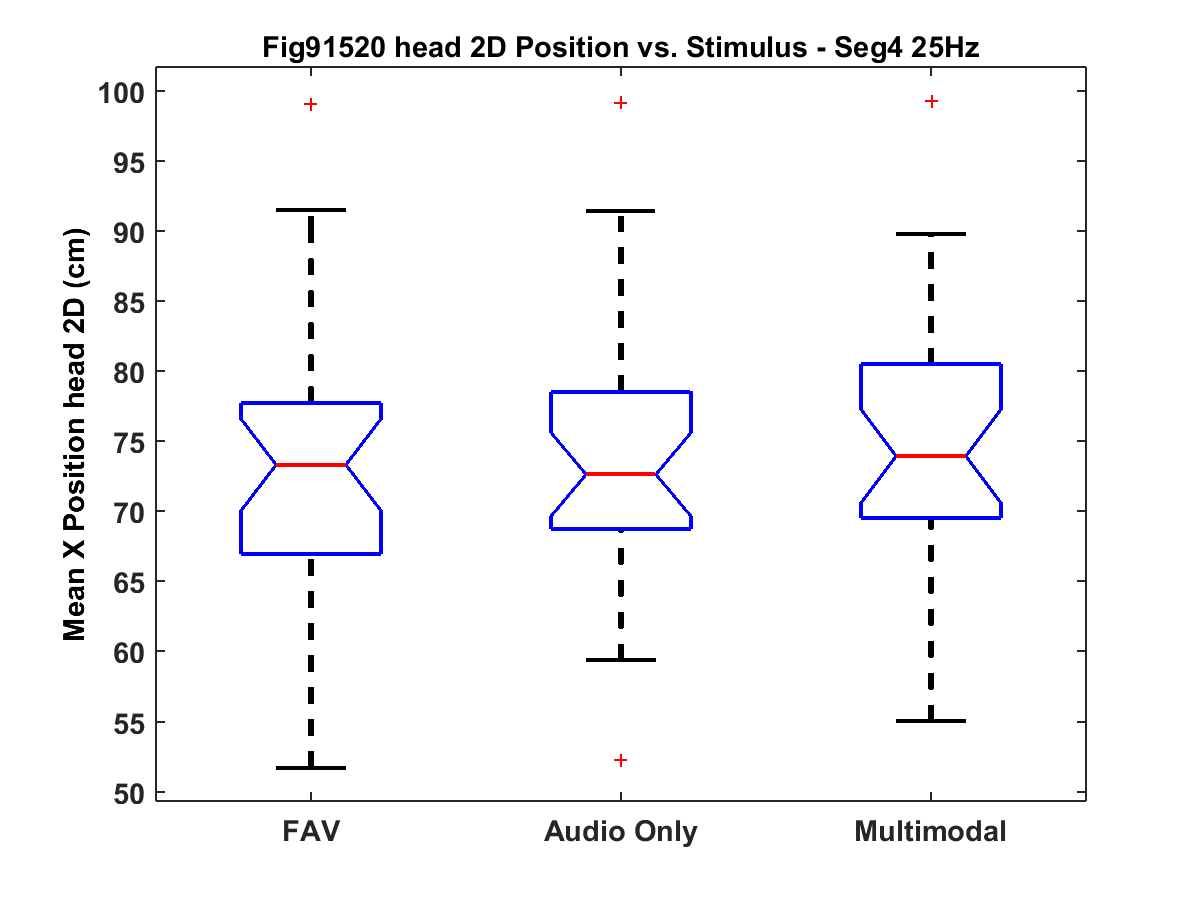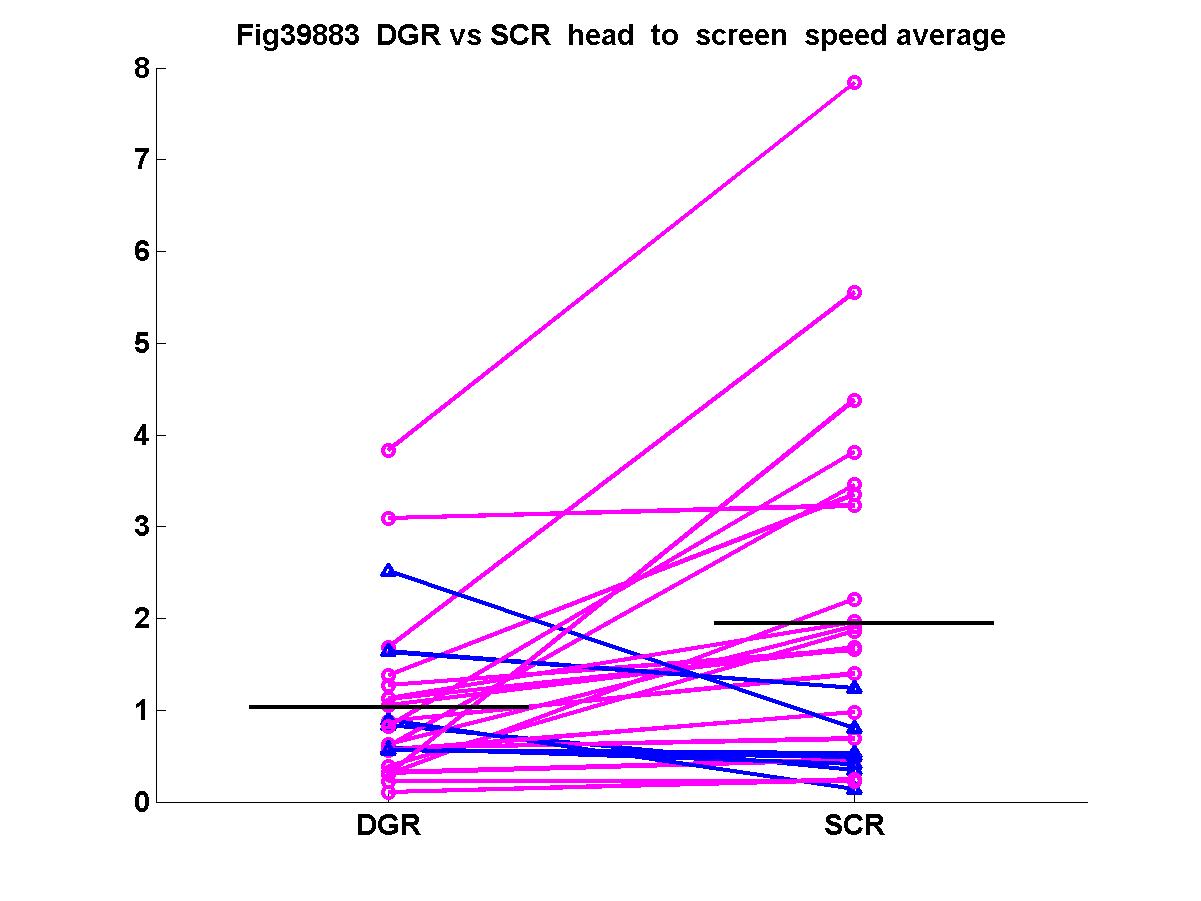Research on Non-verbal Behaviour
This research has two strands: applied and theory. Theoretical research concerns verification of claims and speculation about the association of various non-verbal actions or signal features as markers of specific cognitive states; it also includes methodologies and measurement approaches. Applied research applies these methods to specific real-world questions, including soundscape, noise, music, speed dating, and human computer interaction.
Theory: Our primary contributions concern 1) control experiments based on using computer users mediating their activity via a handheld trackball rather than a mouse (which has effects on movement freedom), 2) using music as a stimulus, 3) using discrete stimuli, 4) developing new analyses to test the structure of movement as well as its amount.
Applied: In our work with Brighton and Hove City Council and the Noise Abatement Society, we have used visual behaviour markers to assess soundscape interventions objectively.
Some Selected Publications
Easteal, M., Bannister, S., Kang, J., Aletta, F., Lavia, L., & Witchel, H. (2014). Urban Sound Planning in Brighton and Hove. In Forum Acusticum 2014. Polish Acoustical Society Krakow, Poland. Download it here
Lopez-Mendez A, Westling CEI, Emonet R, Easteal M, Lavia L, Witchel HJ, Odobez J-M (2014). Automated bobbing and phase analysis to measure walking entrainment to music. ICIP 2014 International Conference on Image Processing. Paris. Download it here
Witchel HJ, Westling C, Tee J, Healy A, Needham R, Chockalingam N (2014). A time series feature of variability to detect two types of boredom from motion capture of the head and shoulders. ECCE 2014 Proceedings of the 32nd European Conference on Cognitive Ergonomics. Download it here
Witchel HJ, Westling C, Tee J, Healy A, Needham R, Chockalingam N (2014). What does not happen: quantifying embodied engagement using NIMI and self-adaptors. Participations Journal of Audience and Reception Studies. 11(1): Article 18. Download it here
Witchel HJ (2013). Engagement: the Inputs and the Outputs. Proceedings of Inputs-Outputs: An Interdisciplinary Conference on Engagement in HCI and Performance. ACM: New York. Article 1. DOI: 10.1145/2557595.2557596 Download it here
Witchel HJ, Westling CEI, (2013). Inputs and Outputs: Engagement in Digital Media from the Maker’s Perspective. Excursions, 4(1). www.excursions-journal.org.uk/index.php/excursions/article/view/80 Download it here
Witchel HJ, Westling C, Needham R, Healy A, Chockalingam N (2013). Mean head and shoulder heights when seated: subconscious postural cycles during discrete, computerised stimuli. ECCE 2013 Proceedings of the 31st European Conference on Cognitive Ergonomics. New York: Association for Computing Machinery, 189-192. Download it here
Witchel HJ, Lavia L, Westling CEI, Healy A, Needham R, Chockalingam N (2013). Using body language indicators for assessing the effects of soundscape quality on individuals. AIA-DAGA Conference on Acoustics. Berlin: Deutschen Gesellschaft für Akustik. . Download it here
Westling CE, Barker L, Healy A, Needham R, Witchel HJ, Chockalingam N (2013). Spatial Data Correlation: An interactive 3D visualisation tool for correlating the motion capture data streams from different devices. EVA – Electronic Visualisation in the Arts 2013 (London). Download it here
Witchel HJ, Healy A, Needham R, Westling C, Chockalingam N (2012). Comparing four technologies for measuring postural micromovements during monitor engagement. ECCE 2012 Proceedings of the 30th European Conference on Cognitive Ergonomics. New York: Association for Computing Machinery, 189-192. Download it here
Lavia, L., Easteal, M., Close, D., Witchel, H., Axelsson, O., Ware, M., & Dixon, M. (2012, August). Sounding Brighton: Practical approaches towards better soundscapes. In INTER-NOISE and NOISE-CON Congress and Conference Proceedings (Vol. 2012, No. 11, pp. 436-444). New York: Institute of Noise Control Engineering. Download it here

